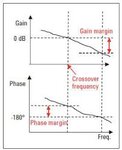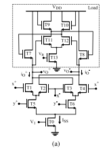electronicuser
Newbie level 6

Hello
I design a four-quadrant analog multiplier and plot it's gain and phase bode plot.
then I try to determine phase margin and analysis stability, but I figure out that phase margin=110 degrees.
I don,t have an idea what does the phase margin=110 degrees mean?:shock:
Is it stable?:roll:
please help me
thanks

- - - Updated - - -
Of course, I know that minimum phase margin=45 degrees and best phase margin=63 degrees
I design a four-quadrant analog multiplier and plot it's gain and phase bode plot.
then I try to determine phase margin and analysis stability, but I figure out that phase margin=110 degrees.
I don,t have an idea what does the phase margin=110 degrees mean?:shock:
Is it stable?:roll:
please help me
thanks

- - - Updated - - -
Of course, I know that minimum phase margin=45 degrees and best phase margin=63 degrees





